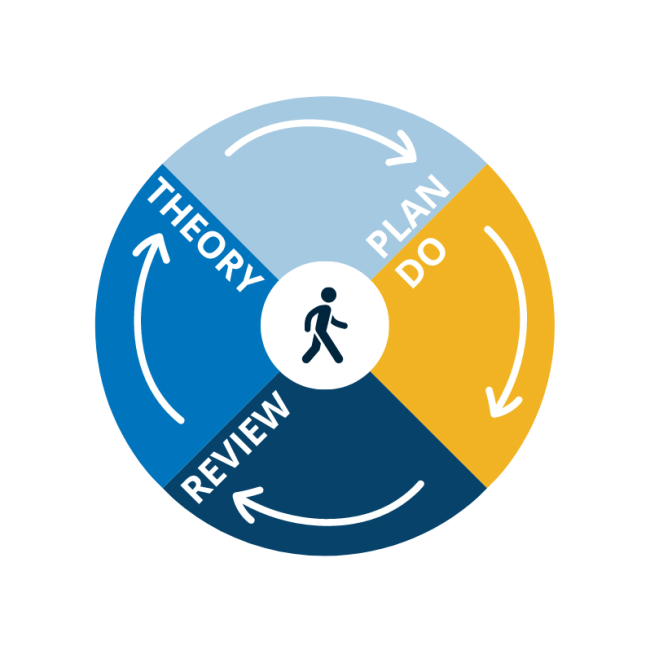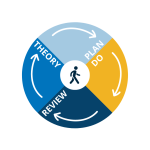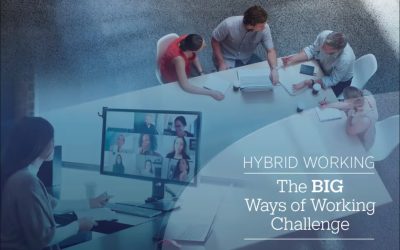
Counting down to our next open session. Sign up below.
Day(s)
:
Hour(s)
:
Minute(s)
:
Second(s)
Why a simulation?
Practice in a sandbox
where it’s safe to make mistakes
Learn by doing
to provide a new perspective
Evolve rapidly
compress a 2 year journey in 1 day
Collaborate as team
you have to work together to succeed
Focus on customer
to succeed in our game
What does a simulation look like?
How does the session work?
It’s all based on Profesor David Kolb’s learning cycle. We believe as he did that human beings can learn best by doing. When we learn new skills like riding a bicycle we don’t just learn the theory and get an online accreditation, we get on the bike, have a go, fall off, learn a bit more and each time get a little bit further.
If that’s how we learn in our personal lives, why don’t we do more of it in the corporate world?

Let’s go into a little more detail

DO
Run the business
Play the game the game for 25 minutes. Work together as a team to support your customers and run a successful business.
You don’t need any experience of the roles you are in for the day, we use metaphors for the work to allow participants to walk the ‘day in the life’ of a role that’s very different to them.
The participants don’t need to know each other before hand nor do they need to do any preparatory work to partake.
The facilitator will use a pre-prepared games kit to run the game which they will combine with the simulation software on a screen at the front. You will honestly never partake in a more interactive and dynamic session. The 25 minutes will fly by.



REVIEW
Analyse the data
The software on the video projector tracks everything that happens in the room so that the metrics can be played back in a review by the facilitator.
First step will be to capture anecdotal feedback from each of the tables.
Second the facilitator will play back a series of reports showing profitability, time to make along with customer satisfaction scores.
Teams are scored on quality not just speed and the reports will highlight a number of areas where there might be room for improvement for each round played.

REVIEW
Analyse the data
The software on the video projector tracks everything that happens in the room so that the metrics can be played back in a review by the facilitator.
First step will be to capture anecdotal feedback from each of the tables.
Second the facilitator will play back a series of reports showing profitability, time to make along with customer satisfaction scores.
Teams are scored on quality not just speed and the reports will highlight a number of areas where there might be room for improvement for each round played.


THEORY
Bring best practice to life
Explore existing best practice and consider how the group can apply it to the simulated environment. With learnings taken from the review stage the facilitator will lead a discussion on best practice that exists.
Opportunities will be explored for improvements within the game but also how they relate to participants real life experiences. Where could they make a change tomorrow in their real jobs that could start making an impact. Who in the room could they collaborate with to make it happen?



PLAN
Implement the improvements
Apply the theory, re-design the room, develop tools and processes so that the performance will improve from round to round.
The groups will change the way work flows in their fictional business by making changes driven by them. They will reconfigure the room, re-structure tasks and track metrics to make better decisions in game. Together they will problem solve how they can optimise their business from the lesson learned in the REVIEW and THEORY stages.
Once completed the cycle is repeated so that teams can complete a number of iterations by the end of the session.

PLAN
Implement the improvements
Apply the theory, re-design the room, develop tools and processes so that the performance will improve from round to round.
The groups will change the way work flows in their fictional business by making changes driven by them. They will reconfigure the room, re-structure tasks and track metrics to make better decisions in game. Together they will problem solve how they can optimise their business from the lesson learned in the REVIEW and THEORY stages.
Once completed the cycle is repeated so that teams can complete a number of iterations by the end of the session.

Don’t take our word for it
Andrew Bailey
Head of Customer Service Strategy and Vulnerability
SSE Distribution
Andrew participated in a simulation this year this is what he had to say…
As leaders we need to focus on three key areas to help our teams grow and progress to tomorrow’s ways of working.
Setting Direction
Stepping out of the flow work to help your team focus on what needs done. Focussing on your customers, driven by data and able to pivot as needed in this turbulent world.
Ways of working
Ensuring that the flow of work is optimal, that value is being delivered consistently, safely and ethically as you use technologies to automate and scale like never before.
Team growth
Creating the space for your team to constantly evolve and improve in a psychologically safe environment so they continue to grow a the pace of the change accelerates.
Insights
Explore our Insights to help build a culture where people feel different about work
Tackling the challenges of Hybrid Working
https://vimeo.com/569882680/5ac3e3c970
WSJ – How the Covid-19 Pandemic Changed Employee Training
Say goodbye to the classroom. Companies are now figuring out how to best use technology to make sure workers learn—and retain—what they need to know. https://www.wsj.com/articles/how-covid19-changed-employee-training-11637612390
Why digital transformation alone isn’t going to save your business
First, the bad news: relentless and rapid disruption is the new normal. As we transition from an industrial economy to a digital one, every sector is in a state of unprecedented upheaval. Your customers are changing; your competitors are evolving; your technology is...




